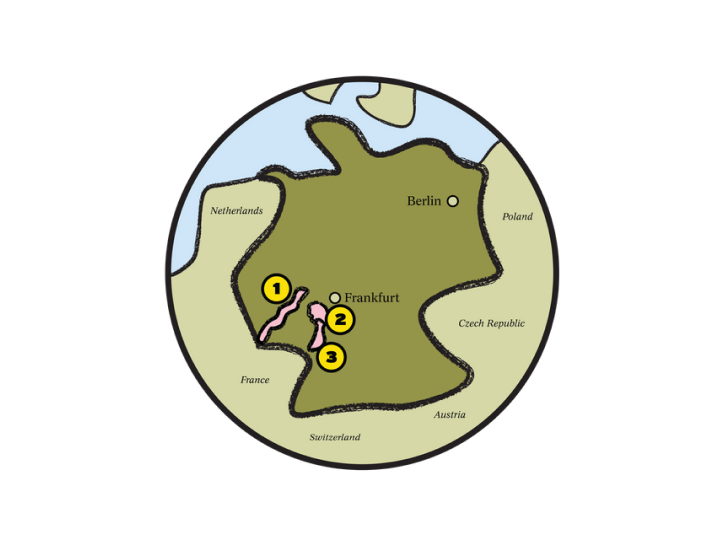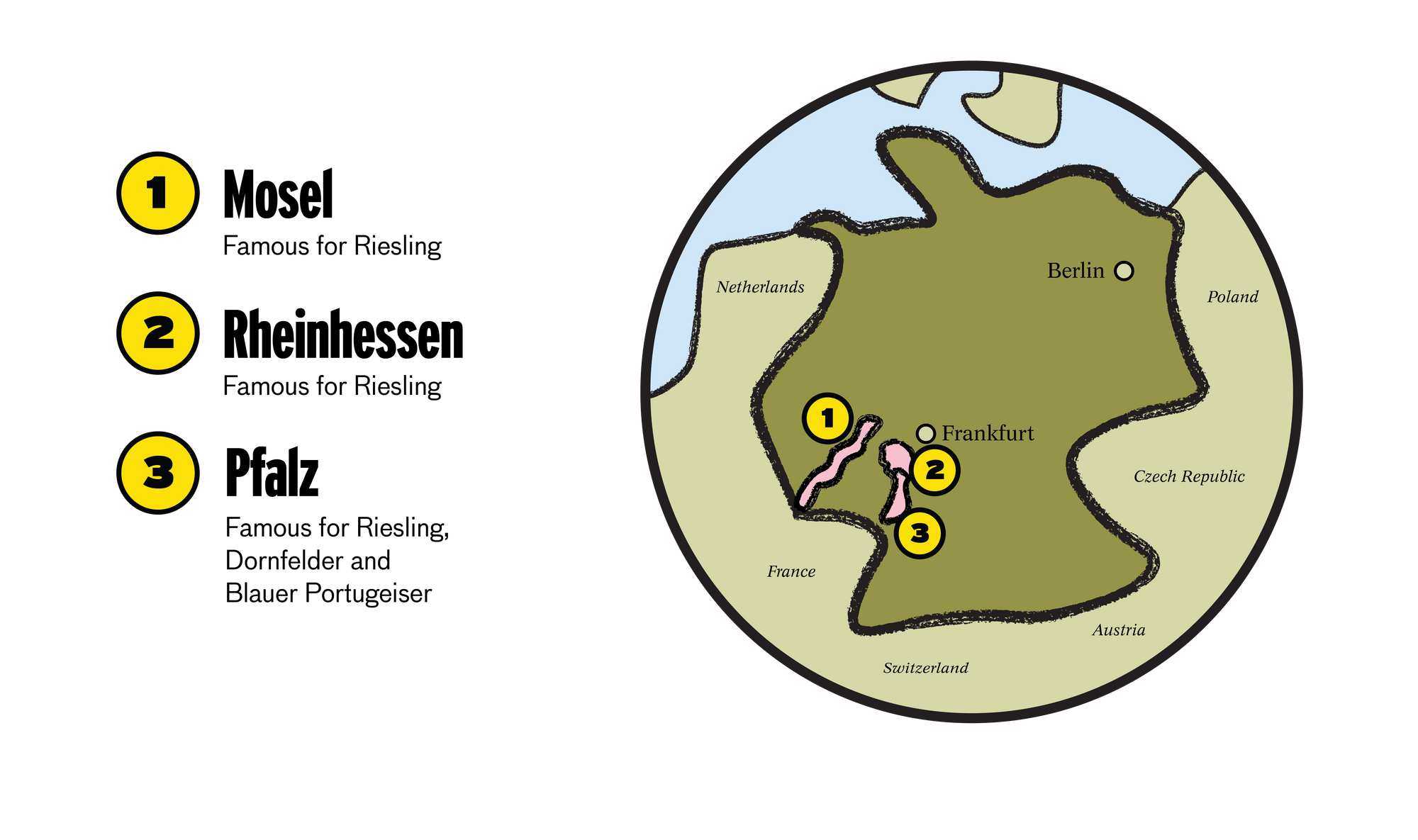

Home to the greatest Rieslings in the world, Germany is one of Europe's main wine countries.
History--red
Germany began it's wine producing industry thanks to Roman invasion, sometime around 200 BCE. Then, during the Middle Ages, monks upheld the tradition of making wine and cultivated the vineyards that are still famous to this day.

Although almost forgotten today, Germany was once as revered as France in terms of wine price and quality. German wines fetched top prices at auction for their incredible sweet wines, sitting alongside the famous wines of Bordeaux and Burgundy.
In 1845, Queen Victoria of England visited the Rheingau wine region; introduced there to the Rieslings of the village Hochheim, she coined the term 'Hock', which is synonymous with German Riesling in Britain today.
Things took a large dip in the 1960s and 70s when overseas demand soared and commercial German winemakers devised sweet, blended wines to export, among them the infamous Liebfraumilch and Blue Nun. While Germany continued to make and drink high quality wines (most Germans have never heard of either brand), very bland, sweet wines became synonymous with German wines internationally.
Thankfully for all, these days the focus is on drier (or 'trocken') styles of wine, and the reputation of German wines is in the ascendance. Riesling still rules supreme, but Pinot Noir is proving very popular, as is the local style of sparkling wine, Sekt.
Main regions--aromatic
Mosel - in the western part of Germany, the Mosel Valley follows the Moselle River and vineyards are planted on the slopes on its banks. Probably Germany's most famous region, and home to wonderful Riesling, mostly with a hint of sweetness, but balanced by invigorating acidity.
Rheinhessen - found on the same longitude as the Mosel, the Rheinhessen is on the Rhine river, not far from Frankfurt. Again home to world-class Riesling, but with a focus on drier styles here.
Pfalz - to the south of the Rheinhessn, the Pfalz borders France and produces more powerful, structured Riesling, along with a few local red varieties like Dornfelder and Blauer Portugeiser.

Main grapes--racy
Riesling - without doubt Germany's claim to fame, the Riesling's of the country are uniquely German and wonderful to drink. From bone dry to a hint of sweetness to luscious dessert wines, Riesling makes floral, citrus-driven and fresh wines up and down the length of Germany.
Pinot Noir - known locally as Spatburgunder, Pinot Noir is the leading red grape in Germany. The cool climate certainly provides a fertile home for this grape, and whilst heavily planted, it has not yet achieved the same success as Riesling.
Specific wine styles--strawberry
Off dry Riesling - whilst in Australia we focus on very dry Rieslings from regions like the Clare Valley, the Germanic style can be a few shades sweeter. The intriguing thing is that the levels of acidity are also higher, meaning that although the wine may have more sugar in it, the taste of it is still fresh and more 'fruity' than straight-out sweet. The wines are lower in alcohol and very refreshing - a totally unique style.
Do you know your wine personality? If your answer is no, take our quiz to find out which wines to pick up next and build your box!
Build my box





